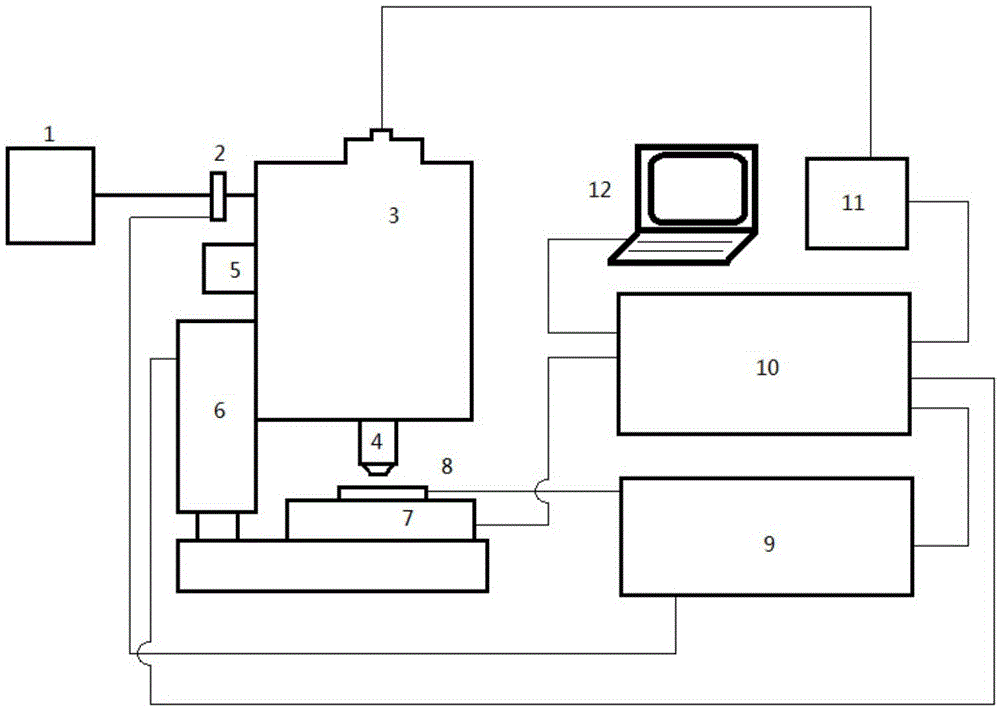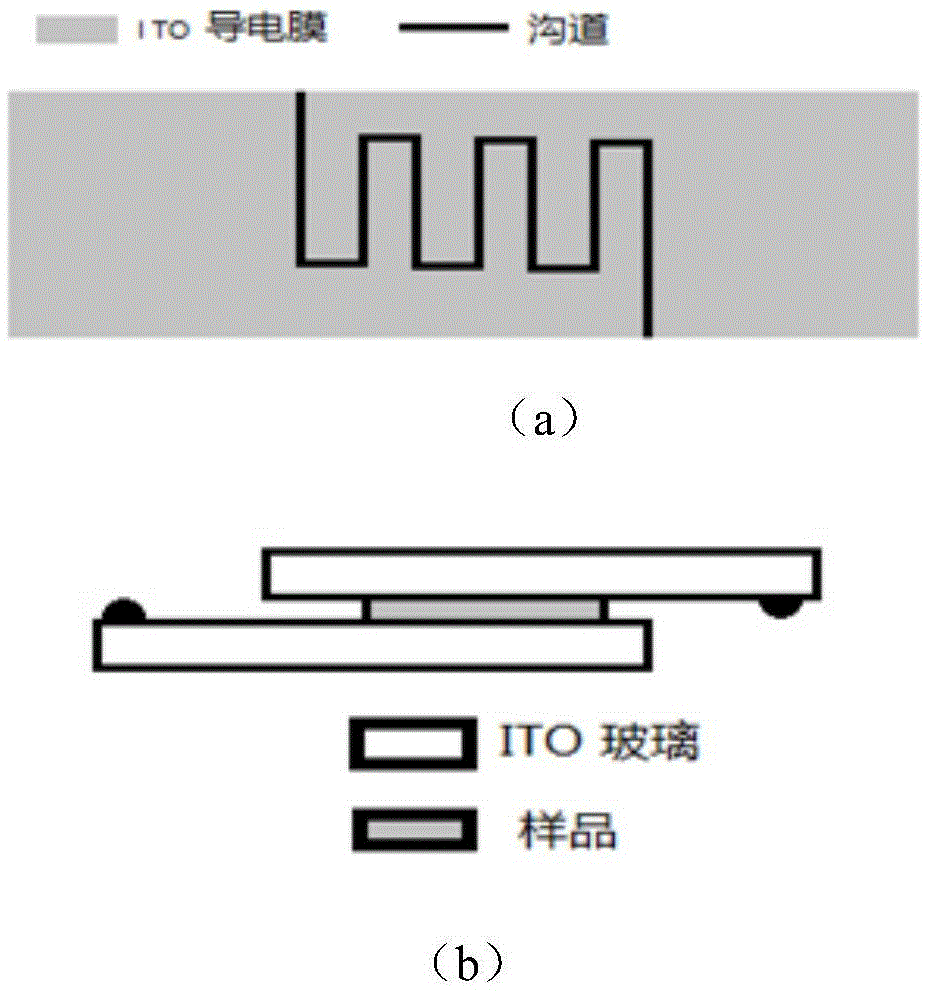Photovoltaic and luminescence characterization methods for one-dimensional nanostructures and three-dimensional micro-regions
A nanostructure and photovoltaic technology, applied in materials excitation analysis and other directions, can solve the problems of photovoltaics that cannot measure three-dimensional directions, and cannot be synchronously characterized.
- Summary
- Abstract
- Description
- Claims
- Application Information
AI Technical Summary
Problems solved by technology
Method used
Image
Examples
Embodiment 1
[0071] The CdS nanobelts are dispersed in the channel electrode, so that the nanobelts are parallel or perpendicular to the electrodes; the sandwich structure electrode is that the thickness direction of the nanobelt is perpendicular to the two electrodes, and the two ends of the channel electrode or the two electrodes of the sandwich structure are connected to the lock-in amplifier. 9 Connect with coaxial cable. The laser light emitted by the 488nm argon ion laser 1 is modulated by the chopper 2 and then coupled into the optical fiber, and introduced into the confocal microscope system. The laser light is focused by the objective lens 4 to the CdS nanobelts dispersed on the electrode 8. The photovoltaic signal has the same modulation frequency as the chopper, and the lock-in amplifier can amplify the photovoltaic signal generated by the CdS nanobelt after being synchronized by the chopper. The output photovoltaic signal of the lock-in amplifier is input to the confocal micros...
Embodiment 2
[0077] The nanowires are dispersed within the channel electrode so that the nanowires are parallel to the electrode or perpendicular to the electrode. Both ends of the channel electrode are connected to the lock-in amplifier 9 by a coaxial cable. The laser light emitted by the 488nm argon ion laser 1 is modulated by the chopper 2 and then coupled into the optical fiber and introduced into the confocal microscope system 3. The laser light is focused by the objective lens 4 to the nanowires scattered on the electrode 8, and the photovoltaic generated by the excitation of the nanowires The signal has the same modulation frequency as the chopper, and the lock-in amplifier can amplify the photovoltaic signal generated by the nanowire after being synchronized by the chopper. The photovoltaic signal output by the lock-in amplifier is input to the confocal microscope system controller 10 through a coaxial cable. The luminescent signals simultaneously generated by the nanowires pass t...
PUM
| Property | Measurement | Unit |
|---|---|---|
| width | aaaaa | aaaaa |
| depth | aaaaa | aaaaa |
| thickness | aaaaa | aaaaa |
Abstract
Description
Claims
Application Information
 Login to View More
Login to View More - R&D
- Intellectual Property
- Life Sciences
- Materials
- Tech Scout
- Unparalleled Data Quality
- Higher Quality Content
- 60% Fewer Hallucinations
Browse by: Latest US Patents, China's latest patents, Technical Efficacy Thesaurus, Application Domain, Technology Topic, Popular Technical Reports.
© 2025 PatSnap. All rights reserved.Legal|Privacy policy|Modern Slavery Act Transparency Statement|Sitemap|About US| Contact US: help@patsnap.com



